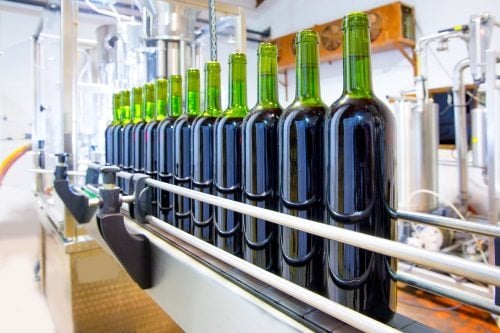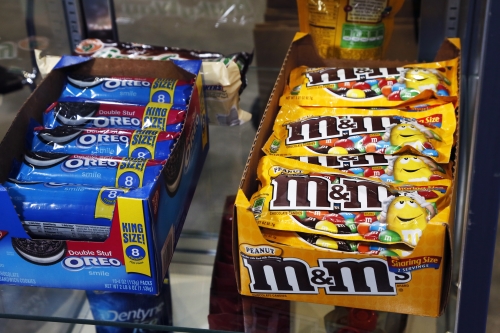Consumer Packaged Goods (CPGs) manufacturers interviewed in a report generally expressed willingness invest in specialized packaging machinery for retail ready packaging (RRP) — if it would mean reduced costs in the long run, according to PMMI, The Association for Packaging and Processing Technologies.
The respondents said they prefer limiting investments to components that simplify and streamline particular points on the manufacturing line, according to Retail Ready Packaging: Research and Analysis report released on June 17, 2014.
Considerations of lifetime cost, labor costs, flexibility and reliability all weigh heavily on their purchase decisions for RRP equipment, as does knowing that packaging requirements are apt to differ between one retailer and another, and between an individual retailer and the market at large.
Material preferences for RRP were mixed among respondents.
While most favored rigid formats for durability and appearance, 67% said they would opt for flexible materials for cost savings.
Paula Feldman, director, business intelligence tells Food News International what RRP can bring to F&B manufacturers.
FNI: What are your views on the importance of RRP to F&B manufacturers?
Feldman: To understand the important of RRP to food and beverage manufacturers, let’s first consider the driving forces behind its growth.
They are namely urbanization and population growth, economic growth, and supermarkets and big-box retailers.
Basically, it boils down to customer demand.
When we conducted the interviews behind PMMI’s Retail Ready Packaging Study, we heard this repeatedly – because of their sales volume, retailers, especially supermarkets and big-box stores, are defining the market for RRP.
Big-box retailers frequently have different packaging requirements than the bulk of the marketplace, and the manufacturer who wants to maintain the relationship often must absorb the costs.
The increase in volume that results, however, does not necessarily lead to increased profit for the manufacturer.
FNI: How can F&B manufacturers capitalize on this growing trend of minimal packaging waste with RRP?
Feldman: Like so many things, RRP can have a positive or negative effect on efforts to reduce waste.
For example, the Kraft Philadelphia brand, in meeting an RRP request, reduced its need for raw materials and cut the steps a retailer must take to prepare a product for display from 15 to three.
With materials choices, according to our research, F&B manufacturers are generally trying to achieve greater sustainability, durability and practicality.
Square-bottomed pouches, for example, make better use of space and package less air than other packages.
However, it is also a conservative market when it comes time for F&B manufacturers to make capital investments.
Labor costs, smaller case counts, sustainability concerns and other factors are going to impact their decisions and force them to find ways to keep costs under control.
FNI: How can F&B manufacturers prepare themselves to deploy RRP in their facilities?
Feldman: First and foremost, F&B manufacturers need to know and/or anticipate what their customers want and need.
That knowledge comes from honest conversations with customers and staying abreast of trends, which are facilitated through trade shows such as PACK EXPO International, which is happening from November 2 to 5 this year in Chicago, US.
As far as capital investments go, manufacturers are primarily focusing their investments on specific components that can simplify and streamline individual points in the manufacturing process.
One company, for example, saved in labor by purchasing a machine that lifts and hangs sausage logs on a tree.
About 43% of respondents said their firms are investing in RRP-specific packaging equipment, but 79% believe the industry will see those investments grow.
Again, it goes back to what the customer wants and how it is best for one’s business to meet those needs.
It is not always an easy decision.
In the course of our research, a food manufacturer described the dilemma of customer demands: “Companies like mine have to invest millions to make retail ready happen. We opened up a plant about four years ago. A lot of the equipment that went in cannot do what they started asking for not long after our plant opened. We have to be able to try and justify the cost to purchase new equipment.”
Factors driving manufacturers’ decisions include lifetime costs, labor costs, flexibility and reliability.
FNI: What does the future hold for RRP?
Feldman: Manufacturers expressed a belief that original equipment manufacturer (OEM) innovations will fall into the area of improving productivity, throughput and uptime.
They did not, however, expect those improvements to be solely the result of technology.
They stressed the importance of better communication, training, and listening and responding to their needs.
Meanwhile, smaller case countsare in demand.
However, neither manufacturers nor OEMs were optimistic about the trend.
Decreased pallet utilization, lower volume shipments and overall inefficiency, and the increases in production the transition to a lower case count brings were listed as drawbacks.
Still, retailers want to keep inventory levels lower, just as they want more variety on the shelf, and they can get both with the smaller counts.
Internet retailers are also looking at smaller case counts, as they can sell and ship them as is.
Urbanization and population growth have a positive effect on retail sales – another amplifier for RRP requests.
Today, Europe is the largest RRP market (US$24.7 billion) by far; North America is second-largest (US$10.4 billion).
In terms of projected growth, we are seeing the greatest compound annual growth rates (CAGR) in Asia (5.5%), Africa (4.6%), as well as Central and South America (3.7%).











